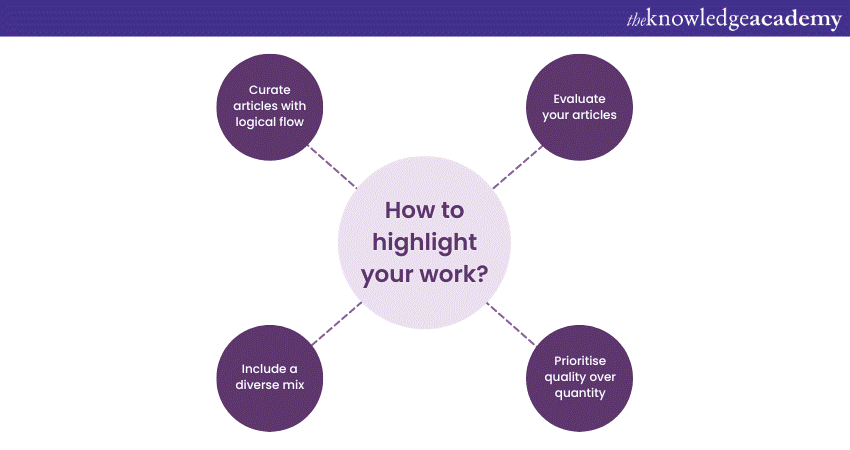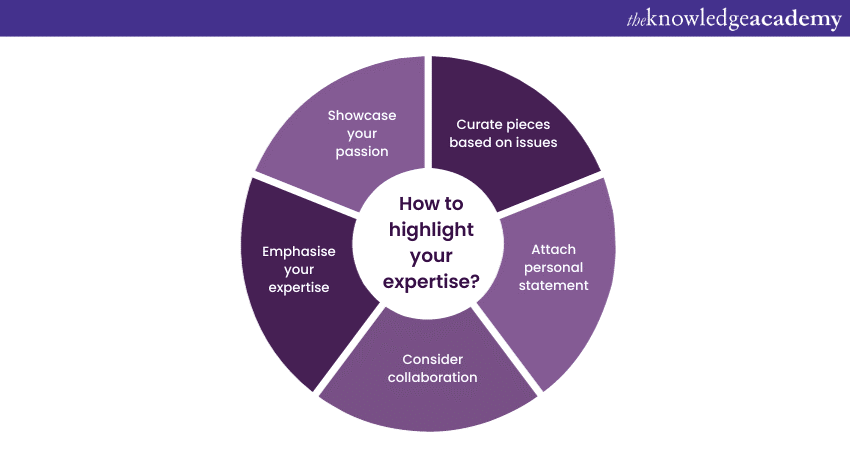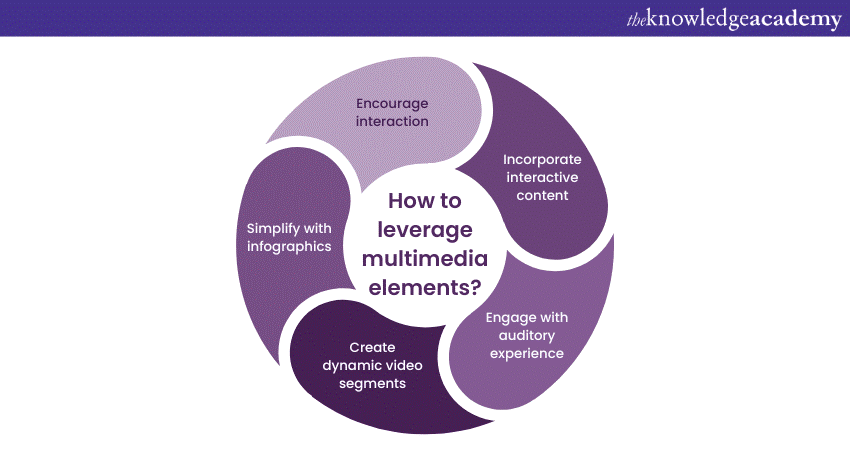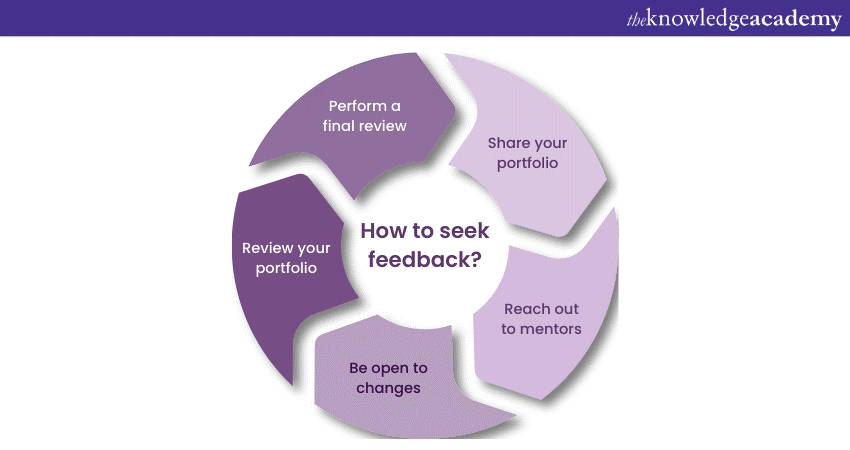We may not have the course you’re looking for. If you enquire or give us a call on 01344 203999 and speak to our training experts, we may still be able to help with your training requirements.
Training Outcomes Within Your Budget!
We ensure quality, budget-alignment, and timely delivery by our expert instructors.

In Journalism's fast-paced and competitive realm, where words hold immense power, your portfolio becomes a visual testament to your abilities, aspirations, and journalistic identity. Mastering the art of crafting a compelling Journalism Portfolio is essential, whether you are a budding writer starting your career or an experienced journalist looking to refresh your image. This all-encompassing blog guides you through the labyrinth of "How to Create a Journalism Portfolio," offering a roadmap that transcends mere compilation.
A Journalism Portfolio is not just an anthology of your work; it's your narrative etched in ink, pixels, and audio waves, revealing your expertise, passions, and diversity of thought. As we delve into the intricate nuances of curating, organising, and presenting your portfolio, you'll unearth the strategies that transform it from a mere collection to a captivating showcase. In this blog, we’ll discuss How to Create a Journalism Portfolio that resonates with your voice and captivates the world with your journalistic prowess.
Table of Contents
1) Understanding the importance of a Journalism Portfolio
2) Collecting your best work
3) Showcasing a variety of writing styles
4) Highlighting your expertise
5) Crafting compelling personal statements
6) Organising and designing your portfolio
7) Leveraging multimedia elements
8) Tailoring your portfolio for your audience
9) Engaging About Me page
10) Seeking and incorporating feedback
11) Keeping your portfolio updated
12) Conclusion
Understanding the importance of a Journalism Portfolio
In the dynamic landscape of Journalism, a well-crafted portfolio stands as your signature—a testament to your skills, dedication, and unique perspective. This collection of your finest work serves as a gateway for prospective employers, editors, and clients to gauge your capabilities, style, and potential contributions. It showcases not only your ability to narrate stories but also your understanding of the craft's intricacies.
A meticulously constructed Journalism Portfolio communicates your adaptability, range, and consistency in producing quality content. It's the canvas on which you paint your journalistic journey, allowing others to appreciate your evolution and proficiency. As an embodiment of your dedication to truth-seeking, impactful storytelling, and insightful analysis, a compelling portfolio holds the power to set you apart in a competitive field. In this digital age, where first impressions are often virtual, your portfolio becomes your virtual newsroom—a reflection of your commitment to Journalism's timeless principles.
Collecting your best work
Gathering a diverse array of your most outstanding work is the foundational step in constructing a remarkable Journalism Portfolio. This meticulous curation process involves evaluating your articles, stories, and multimedia projects to present a cohesive narrative that resonates with your journalistic identity.

Begin by selecting pieces that showcase your versatility and depth as a journalist. Include a mix of news articles, feature stories, opinion pieces, and investigative reports. Each piece should exemplify your ability to adapt to different genres, tones, and subjects. Aim for a balance between your preferred niche and broader topics, demonstrating your proficiency across the journalistic spectrum.
While it's tempting to showcase every piece you've ever written, prioritise quality over quantity. Choose work demonstrating your growth, innovation, and engagement with contemporary issues. Consider the story's impact, the depth of research, and the clarity of writing. Additionally, ensure that your portfolio includes:
a) A variety of sources
b) Demonstrating your adeptness at conducting interviews
c) Fact-checking
f) Utilising different types of data
As you compile your portfolio, pay attention to its overall narrative. Your pieces should flow logically and thematically, allowing the viewer to understand your expertise and interests. Highlight standout projects that have received recognition, awards, or substantial readership.
Remember that your portfolio is a dynamic entity, subject to continuous improvement. Regularly update it with fresh work that represents your evolving skills and the shifting landscape of Journalism. Through careful selection and curation, your collection of best work will serve as a compelling introduction to your journalistic journey, capturing the essence of your talent and dedication.
Showcasing a variety of writing styles
Diversity in writing styles is a hallmark of a versatile journalist, and your portfolio is the perfect canvas to showcase this adaptability. When constructing your Journalism Portfolio, the inclusion of a wide range of writing styles underscores your capacity to engage with different audiences and effectively convey information through various formats.
Begin by featuring news articles that exhibit your proficiency in concise, factual reporting. These pieces should demonstrate your ability to distil complex information into easily digestible content while maintaining the core principles of accuracy and objectivity.
Incorporate opinion pieces that highlight your capacity for critical analysis and thought-provoking commentary. These articles offer insight into your personal perspective and depth of understanding on a given topic.
Long-form narratives are a testament to your storytelling skills. Such pieces allow you to explore in-depth narratives, diving into subjects with meticulous research and vivid descriptions. They showcase your ability to captivate readers with immersive storytelling techniques.
Data-driven Journalism is increasingly relevant in today's digital age. Include articles where you've analysed and interpreted data to uncover trends, correlations, or insights. This demonstrates your proficiency in translating complex data into understandable and meaningful narratives.
Lastly, multimedia elements such as podcasts, videos, and infographics can be invaluable additions to your portfolio. They showcase your versatility in storytelling across different mediums, appealing to audiences with varying preferences for consuming content.
Strive for a harmonious blend of these writing styles, ensuring that each piece complements the others, contributing to a well-rounded representation of your abilities. A portfolio that offers a tapestry of writing styles not only speaks to your adaptability but also attests to your capacity to resonate with diverse readerships and engage them effectively.
Highlighting your expertise
Your Journalism Portfolio is not just a collection of articles; it's an opportunity to demonstrate your expertise and establish yourself as a subject matter authority. Highlighting your specialisation or niche within the field sets you apart and positions you as a go-to source for insightful and in-depth coverage.

Start by curating pieces that align with your expertise if you have a passion for environmental Journalism, and showcase articles that tackle environmental issues, climate change, conservation efforts, and related topics. This focused selection immediately communicates your dedication to and knowledge of a specific domain.
Accompany each specialised piece with a brief personal statement that highlights your commitment to the subject matter. Explain why you're drawn to it, what unique perspectives you bring, and how your expertise adds value to the readership.
Consider collaborating with experts or industry professionals for interviews or co-authored articles. This enhances your portfolio's quality and underscores your network and willingness to engage with fellow experts.
By emphasising your expertise in your Journalism Portfolio, you're showcasing your passion and building a strong case for why you're the ideal candidate for certain assignments, freelance opportunities, or positions. Remember, your portfolio should resonate with your target audience; highlighting your specialisation is a powerful way to achieve that.
Elevate your personal growth journey with our Personal Development Training – Sign up today!
Crafting compelling personal statements
Complementing each piece in your Journalism Portfolio with well-crafted personal statements adds depth and insight that captivates your audience. These statements provide a glimpse into your thought process, ethical considerations, and the stories behind the stories, illuminating your journey as a journalist.
Begin by outlining the context of each piece. Explain the circumstances that led to the article's creation, the challenges faced during research or reporting, and any unique angles you pursued. Detail the sources you consulted and your steps to ensure accuracy and balance.
Delve into the ethical considerations you navigated. Discuss how you approached sensitive topics, maintained objectivity, and respected the privacy of individuals involved. Address any challenges you encountered in adhering to journalistic ethics and how you overcame them.
Share your insights into the impact of the piece. Highlight the responses, discussions, or changes sparked by your work. Did your article contribute to public awareness, policy changes, or community conversations? Your statement should shed light on the lasting effects of your reporting.
Consider sharing anecdotes or personal reflections that offer a behind-the-scenes look at your journalistic process. Did you uncover a surprising detail during your research? Did a source's comment change your perspective on the topic? These personal touches humanise your work and connect you with your audience.
Crafting compelling personal statements requires introspection and a willingness to share your journey openly. Through these statements, you're not just presenting facts; you're inviting readers into your world as a journalist, fostering a deeper connection that enhances the impact of your portfolio.
Organising and designing your portfolio
The organisation and design of your Journalism Portfolio are pivotal in creating a seamless and engaging user experience. A well-structured portfolio showcases your work effectively and reflects your professionalism and attention to detail.
Begin by categorising your work into sections that align with different writing styles or themes. Common categories include "News," "Features," "Opinions," "Investigations," and "Multimedia." This division makes navigation intuitive and allows visitors to explore your expertise in a structured manner.
Choose a clean and minimalist design that doesn't overshadow your content. Opt for a layout emphasising readability, with a legible font and ample white space. Use consistent colours and visual elements that resonate with your brand.
Consider using an online platform or a personal website to host your portfolio. Platforms like WordPress, Squarespace, or dedicated portfolio sites offer customisable templates tailored to displaying journalistic content. Ensure the platform is responsive, as many visitors will access your portfolio on various devices.
Include a navigation menu that guides visitors to different sections of your portfolio. An "About Me" page should briefly introduce who you are, your journalistic journey, and your mission as a writer.
When presenting your work, offer a brief overview of each piece, including the publication, date, and a short description. Incorporate high-quality images and headlines that entice visitors to read more.
Regularly update your portfolio to reflect your latest work and achievements. Broken links or outdated information can detract from the professionalism you aim to convey.
Master organisational skills for success with our Organisational Skills Training – Sign up today!
Leveraging multimedia elements
Incorporating multimedia elements into your Journalism Portfolio amplifies its impact by showcasing your versatility and adaptability across different mediums. Multimedia engages your audience and demonstrates your ability to tell stories using various forms of content.

Integrate podcasts, videos, infographics, and interactive content that complement your written work. A podcast can provide an auditory experience, allowing visitors to hear your voice and insights. Videos offer a dynamic way to present news segments, interviews, or on-the-ground reporting.
Infographics visually simplify complex data or concepts, enhancing reader comprehension. Interactive elements, such as quizses or timelines, invite engagement and immersion.
When integrating multimedia, ensure that the quality is consistent with your written work. High-resolution images, clear audio, and well-edited videos reflect your commitment to excellence.
Provide context for each multimedia piece with concise descriptions. Explain how the multimedia component enhances the story or provides additional layers of understanding.
Remember that multimedia should complement your portfolio's overall narrative, reinforcing your strengths and expertise. By incorporating diverse mediums, you showcase your adaptability and enhance your portfolio's engagement factor, leaving a lasting impression on your audience.
Take the first step towards podcasting mastery with our Introduction to Podcasting Training – Sign up now!
Tailoring your portfolio for your audience
Tailoring your Journalism Portfolio to your intended audience is a strategic move that maximises your impact and resonates with those you aim to captivate. Whether you're seeking a job, freelance opportunities, or looking to engage specific readerships, customisation is key.
Start by researching your target audience's preferences, interests, and needs. If you're applying for a particular media organisation, align your portfolio with its focus and values. Showcase work that mirrors their editorial style or covers topics relevant to their readership.
For freelancers, consider the niches or industries you're aiming to serve. Feature articles that demonstrate your expertise in those areas, highlighting your understanding of their unique challenges and concerns.
Arrange your portfolio to prominently display pieces that align with your audience's interests. Prioritise work that showcases your ability to provide solutions, insights, or perspectives that resonate with them.
Craft personal statements that speak directly to your audience's concerns. Explain how your work addresses their interests or offers solutions to their problems. This demonstrates your understanding of their needs and positions you as a valuable asset.
If you're showcasing your portfolio to a wide range of audiences, consider creating separate sections or pages for different segments. This ensures that each audience encounters content tailored specifically to their interests.
You demonstrate your attentiveness and adaptability by customising your Journalism Portfolio to cater to your audience. This approach captures the attention of potential employers or clients and establishes a rapport that can lead to meaningful connections and opportunities.
Engaging About Me page
Your "About Me" page serves as the window into your journalistic persona, offering readers a glimpse of the person behind the bylines. This is your opportunity to establish a personal connection and provide context to your work.
Start by sharing your journey into Journalism, detailing what ignited your passion and the pivotal experiences that shaped your approach. Highlight your expertise and areas of specialisation, showcasing your unique perspective.
Share anecdotes or experiences that reflect your dedication and values as a journalist. Discuss your commitment to accuracy, objectivity, and ethical reporting.
Beyond your professional identity, offer insights into your personality, hobbies, or interests that enrich your writing. This humanises you and fosters a relatable connection with your audience.
Include contact information for inquiries or collaborations. Make reaching out easy for potential employers, editors, or fellow journalists.
Remember that your "About Me" page isn't just about listing achievements; it's about telling your story. Engage your readers by infusing authenticity and passion into your narrative, leaving them impressed with your credentials and intrigued by the person they're reading about.
Seeking and incorporating feedback
Embracing feedback is essential to refining your Journalism Portfolio into a compelling showcase of your skills. Seeking input from peers, mentors, or experienced colleagues provides valuable insights that elevate the quality of your work.

Start by sharing your portfolio with individuals whose opinions you value. Ask for specific feedback on the organisation, content selection, and overall presentation. Constructive criticism helps identify blind spots and areas for improvement.
Consider reaching out to mentors or editors who can offer professional guidance. Their industry experience lends a unique perspective that can enhance the effectiveness of your portfolio.
Be open to feedback and willing to make necessary changes. While you should remain true to your voice and style, constructive suggestions can help you polish your work and address any weak points.
After incorporating feedback, give your portfolio a final review to ensure that all changes have been effectively integrated. This thorough approach reflects your commitment to delivering a polished and impressive portfolio.
Remember that feedback isn't a one-time endeavour. Regularly seek input, especially when adding new work or making updates. Embracing feedback as an ongoing process ensures that your portfolio consistently reflects your growth and evolution as a journalist.
Keeping your portfolio updated
In the ever-evolving landscape of Journalism, maintaining an updated portfolio is essential to showcase your continuous growth and relevance. Regularly refresh your portfolio by incorporating your latest work, achievements, and accomplishments.
As you publish new articles, features, or multimedia projects, promptly add them to your portfolio. This demonstrates your commitment to staying current and engaged with emerging trends.
Regularly review and remove outdated or less relevant pieces. Keeping your portfolio concise and focused on your best work ensures that visitors encounter your strongest material.
If you receive awards, accolades, or recognition, include them in a dedicated section highlighting your achievements.
Remember to adjust your statements and context descriptions as needed to reflect the latest developments in your work.
By consistently updating your Journalism Portfolio, you demonstrate your commitment to your craft and offer a dynamic representation of your skills and expertise to potential employers, clients, and readers.
Conclusion
In the world of Journalism, where words shape perceptions and stories hold immense power, your portfolio becomes the embodiment of your journalistic journey. It's a canvas that speaks to your versatility, expertise, and commitment to truth. This guide has unveiled the art of creating a captivating Journalism Portfolio, offering insights into selecting diverse pieces, crafting personal statements, and incorporating multimedia.
As you curate your best work, remember that your portfolio is more than a collection of articles; it's your narrative, a testament to your growth, and a showcase of your unique voice. You demonstrate adaptability by tailoring it to your audience, while consistent updates signify your dedication to staying current. Let your portfolio reflect your passion and a key that opens doors to exciting opportunities in the dynamic realm of Journalism.
Frequently Asked Questions
Upcoming Business Skills Resources Batches & Dates
Date
 Journalism Course
Journalism Course
Fri 24th Jan 2025
Fri 21st Mar 2025
Fri 2nd May 2025
Fri 27th Jun 2025
Fri 29th Aug 2025
Fri 3rd Oct 2025
Fri 5th Dec 2025







 Top Rated Course
Top Rated Course



 If you wish to make any changes to your course, please
If you wish to make any changes to your course, please


